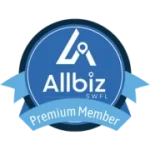If you have been on the internet for more than a few seconds, you know that search engine optimization (SEO) is a great way to bring in traffic. But in case you haven’t been around the internet for a few seconds, or if this is your first time reading this article: SEO is important. And on-page SEO refers to all the elements on your website that affect how Google sees it and ranks it accordingly in its search results. This means specific words and phrases on web pages, such as meta descriptions, page titles, headlines (which go above and below each result), length of content, and so on.
Page Titles
Page titles are the most important on-page SEO element. They need to be unique for every page and describe their content.
They should also include keywords, but not too many. Some people think that you should put your target keyword in your title tag around ten times, but this is unnecessary, as Google will ignore it if it finds something redundant. The ideal title length is between 50–70 characters (including spaces); otherwise, you risk getting a “mismatch” penalty from Google.
Meta Descriptions
Meta descriptions are the short summaries that appear in search results. They are limited to 155 characters and are a great way to entice users to click on your website.
Meta descriptions should be unique for each page and should not be repeated.
The benefit of having good meta descriptions is that they can help your website rank higher in search results. However, if you ignore this aspect of SEO and don’t write unique meta descriptions, it will hurt your rankings rather than help them.
Headlines
Headlines are one of the most important elements of on-page SEO. They’re also one of the first things visitors see when they land on your site, so getting them right is important.
A good headline should be short, sweet, and relevant to your writing. Use a keyword or two if possible (but don’t overdo it). You can also try different headlines for different pages to keep things fresh and exciting for your readers.
Content
Your content is an essential aspect of your website. It’s what will drive traffic to your site, make it unique, and help you rank higher in search engines. In fact, most people who visit your website do so because of the content, not because they saw a sponsored post on Facebook or a banner ad. That’s why it’s so vital that you create quality content that engages visitors and keeps them coming back for more.
Website Speed
The first thing to understand is the difference between page load time and site speed. The former refers to how long your website takes to load when you visit it, while the latter measures how fast your pages are loading across the board. For example, if you were looking at two sites with the same page load time (1 second), but one had a faster site speed (3 seconds), which one would you choose? The answer should be obvious.
Site speed matters because most people don’t have unlimited internet data plans or unlimited patience for waiting for web pages to load. While some people might be willing to wait 5 seconds for a webpage if they’re getting something worthwhile out of it, many people will not wait more than 3 seconds before giving up and moving on. They will give up on the page if they don’t get anything out of it.
Conclusion
Search engine optimization is a long-term strategy. If you’re expecting a quick fix, you’ll be disappointed. SEO isn’t magic; it’s an optimization technique that needs to be properly implemented and maintained over time.
SEO is not an easy black box where you can put in a few keywords and expect results—it takes time, effort, and patience (and sometimes money).
It also doesn’t function like a Ponzi scheme; don’t expect overnight success!
There are many other on-page SEO elements to consider, but these are some of the most common and effective. If you want to build a strong website, start by ensuring it has good page titles and descriptions, headlines that draw readers in, relevant content for your audience’s needs, and speed (or lack thereof).



